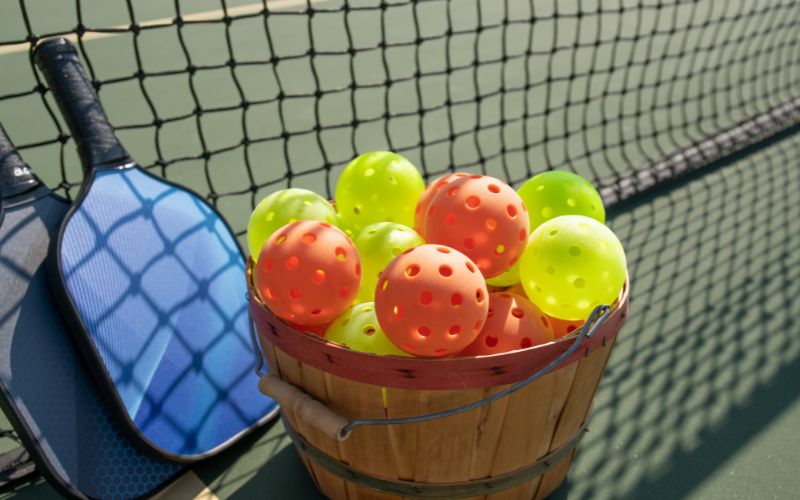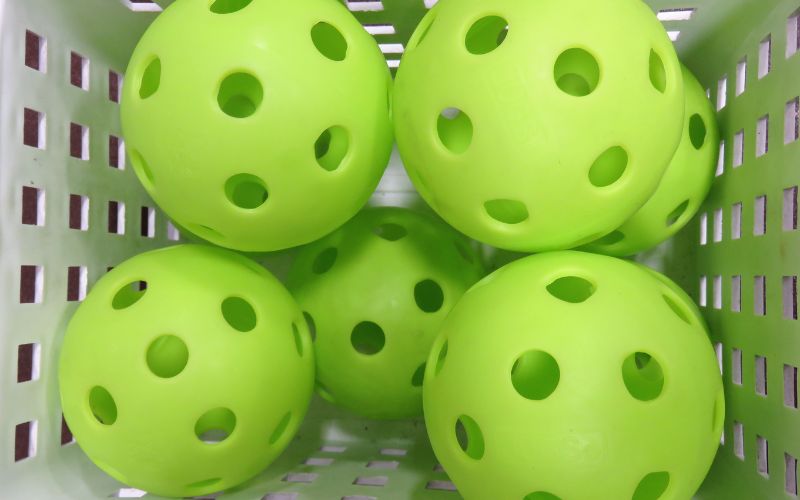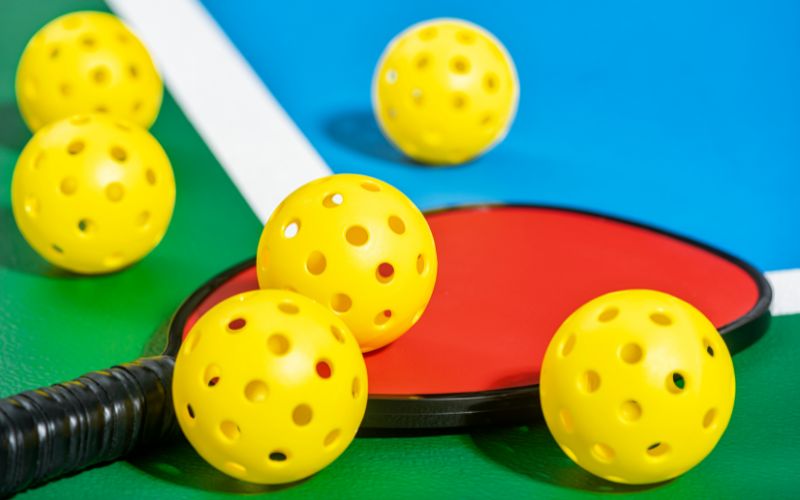Pickleball, a game that combines elements of tennis, badminton, and ping-pong, has been gaining popularity across the globe. As players engage in this fast-paced sport, one common question arises: how long do pickleball balls last? The durability of pickleball balls depends on various factors, including their type, playing conditions, and usage patterns.
Understanding Pickleball Balls
Pickleball balls are specifically designed for the sport, featuring characteristics that cater to the game’s dynamics. Unlike tennis balls, which have a felt covering, pickleball balls are made of plastic and have small holes throughout, resembling oversized wiffle balls. These holes help regulate the ball’s flight and speed during play.
Types of Pickleball Balls
There are primarily two types of pickleball balls: indoor and outdoor. Each type is engineered to perform optimally under specific conditions.
Indoor Pickleball Balls
Indoor pickleball balls are crafted for play within controlled environments, such as gymnasiums or indoor courts. They are designed to withstand smooth surfaces and consistent temperatures. Indoor balls are usually softer compared to their outdoor counterparts to accommodate indoor playing conditions.
Outdoor Pickleball Balls
Outdoor pickleball balls, on the other hand, are tailored to endure rougher surfaces and variable weather conditions. These balls are slightly heavier and more durable, making them suitable for playing outdoors where elements like wind and direct sunlight may affect gameplay.
What Is the Duration of Durability for Outdoor Pickleball Balls?
Outdoor pickleball courts are typically either tennis courts repurposed for pickleball or courts designed specifically for the game. They commonly feature an asphalt or concrete surface, which alters the ball’s behavior compared to an indoor court.
Outdoor pickleball balls are equipped with smaller perforations and are composed of a notably sturdier plastic compound. Consequently, being struck by an outdoor pickleball ball anywhere on the body tends to be more painful than with an indoor ball. The primary rationale behind these attributes, particularly the quantity and size of the perforations, is the necessity for the balls to withstand adverse weather conditions, particularly windy environments.
What Is the Lifespan of Indoor Pickleball Balls?
Indoor pickleball courts are typically fashioned out of wooden basketball or gymnasium floors that are marked to accommodate pickleball matches. The interaction of the ball with the wooden surface differs considerably from that on asphalt or concrete courts.
Indoor pickleball balls feature fewer and larger perforations, and their plastic composition is softer, primarily because they don’t encounter the harshness of asphalt or concrete surfaces. Moreover, they don’t require inherent wind resistance for effective use by players.
While it’s feasible to use outdoor balls for indoor pickleball, they may not deliver optimal performance. Additionally, softer pickleball balls may exhibit signs of wear, including cracking, sooner, especially among players who favor powerful shots, but they tend to endure longer when handled by meticulous players who prefer a slower pace.
For competitive outdoor play, the top choice often leans towards the Dura Fast 40 balls due to their impressive speed.
Factors Affecting the Lifespan of Pickleball Balls
Several factors influence how long pickleball balls last, ranging from environmental conditions to the intensity of play.
Playing Conditions
The lifespan of pickleball balls can vary depending on the playing surfaces and weather conditions. Balls used on smooth indoor courts may last longer compared to those played on rough outdoor surfaces. Similarly, extreme temperatures and direct sunlight exposure can accelerate wear and tear on pickleball balls.
Usage Patterns
The way pickleball balls are used during gameplay also impacts their longevity. Pickleball players who frequently hit the ball with forceful shots may notice signs of wear and tear sooner than those who play more casually. Additionally, balls that are constantly dropped or hit against hard surfaces are more prone to damage.
Material Quality
The quality of materials used in manufacturing pickleball balls plays a significant role in determining their lifespan. High-quality balls are less likely to crack, develop holes, or lose their shape after repeated use. Players should consider opting for reputable brands known for producing durable pickleball equipment.
Signs of Wear and When to Replace Pickleball Balls
As pickleball balls age, they exhibit various signs of wear that indicate the need for replacement.
Cracks and Holes
Cracks and larger holes on the surface of pickleball balls are common indicators of aging. These imperfections not only affect the ball’s flight and bounce but also pose safety hazards during gameplay. Players should inspect their balls regularly for any signs of damage.
Loss of Bounce and Spin
Over time, pickleball balls may lose their ability to bounce effectively, resulting in unpredictable gameplay. Similarly, the loss of spin reduces players’ control over the ball, affecting the overall quality of the game. When pickleball balls fail to perform as expected, it’s time to consider replacing them.
Softening and Weight Changes
As pickleball balls age, they may become softer and slightly heavier due to prolonged use and exposure to various elements. These changes alter the ball’s flight trajectory and impact its responsiveness during play. Players should be mindful of any noticeable differences in the feel and weight of their balls.
Wear and Tear
Excessive wear and tear, such as surface abrasions and scuff marks, indicate that pickleball balls have reached the end of their usable life. While minor imperfections are expected with regular play, significant damage compromises the ball’s performance and safety.
Conclusion
In conclusion, the lifespan of pickleball balls varies depending on several factors, including the type of ball, playing conditions, and usage patterns. Whether playing indoors or outdoors, it’s essential for pickleball enthusiasts to monitor the condition of their balls regularly and replace them as needed to ensure optimal performance and safety on the court. By understanding the signs of wear and knowing when to retire old balls, players can continue to enjoy the excitement and camaraderie that pickleball brings to the game.
Frequently Asked Questions about Pickleball Balls
How long do pickleball balls typically last?
The durability of pickleball balls depends on various factors such as their type, playing conditions, and usage patterns. On average, pickleball balls can last anywhere from 8 to 20 games.
What are the differences between indoor and outdoor pickleball balls?
Indoor pickleball balls are softer and have fewer, larger holes compared to outdoor balls. Outdoor balls are heavier and more durable to withstand rougher surfaces and variable weather conditions.
Can outdoor pickleball balls be used indoors?
While it’s possible to use outdoor pickleball balls indoors, they may not offer optimal performance due to their heavier construction and different material composition.
What are the signs that indicate it’s time to replace pickleball balls?
Signs of wear such as cracks, loss of bounce, and softening of the ball indicate that it’s time to replace pickleball balls. Excessive wear and tear, including surface abrasions and scuff marks, also warrant replacement.
Which pickleball balls are recommended for competitive outdoor play?
The Dura Fast 40 balls are often the preferred choice for competitive outdoor play due to their impressive speed and durability on outdoor courts.






